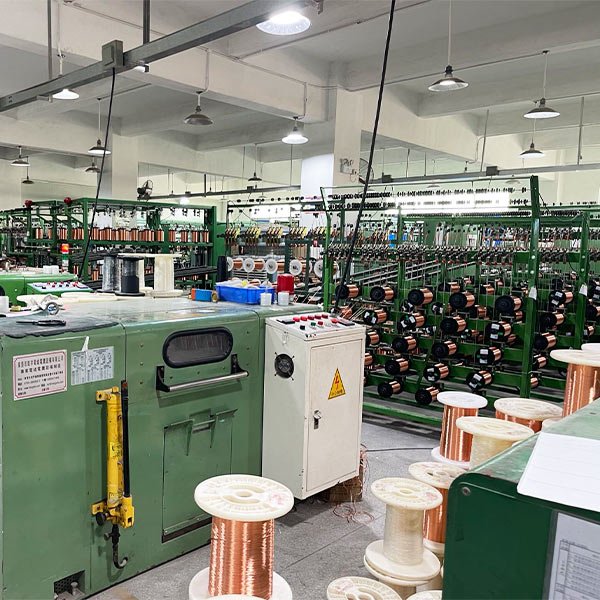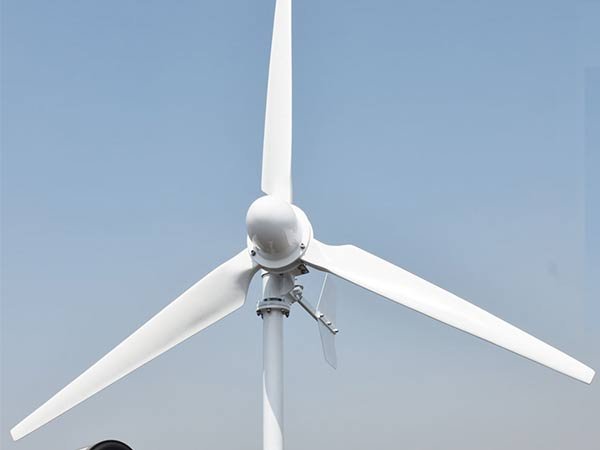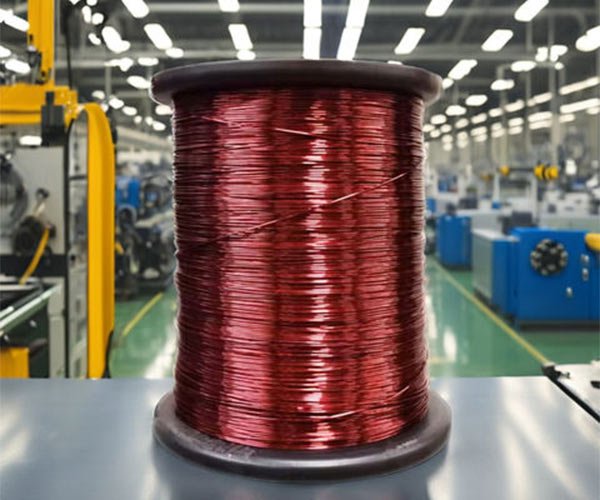In the world of coil production, the insulation layer on magnet wires is an integral component that influences numerous aspects of the final product. From extending the service life to determining application suitability, insulation affects cost, coil design, and manufacturing efficiency. This article provides engineers with a comprehensive overview of wire insulation, emphasizing its significance in achieving optimal coil performance.
Why Do Magnet Wires Need Insulation?
The primary function of insulation on magnet wires is to ensure that the electrical current flows correctly through the coil’s windings. Without insulation, the turns of the coil would short-circuit, rendering the winding ineffective. The insulation also protects the wire from external damage and ensures the formulas used in electromagnetic calculations—such as the number of turns (N)—are accurate. In short, insulation is crucial for both safety and functionality in coil applications.
Types of Insulation for Magnet Wires
The thickness and quality of insulation layers on magnet wires are categorized into grades, each offering a specific balance between electrical efficiency and mechanical durability. These grades, as defined by international standards such as IEC 60317, dictate the minimum and maximum thickness of insulation layers:
- Grade 1: Features the thinnest insulation, ideal for applications requiring high electrical conductivity.
- Grade 2: Offers moderate thickness for a balance of insulation and efficiency.
- Grade 3: Provides the thickest insulation for enhanced durability in high-stress environments.
In custom applications, wires with non-standard insulation thicknesses or tighter tolerances are also available to meet specific design requirements. However, engineers must consider the actual outer diameter of the insulated wire during calculations to avoid design discrepancies.
What Are Wire Enamels?
Wire enamels, also known as primary insulation, are thin coatings applied to round or flat wires made of copper or aluminum. These coatings, cured by heat, serve as the first line of electrical insulation. In addition to electrical properties, wire enamels must exhibit strong chemical and thermal resistance, excellent adhesion to the base material, and robust mechanical stability.
The application of wire enamels varies based on the wire’s size and shape, with methods including horizontal, vertical, nozzle, or felt-based coating processes.
Common Insulation Materials for Coil Manufacturing
The choice of insulation material is essential for achieving optimal performance in coil manufacturing. The most commonly used materials are resin-based enamels, selected based on the specific application and required insulation class. Here are some key insulation types and their uses:
Polyurethane (PUR)
- Properties: Good solderability at ~375°C, high resistance to cracks and pinholes.
- Applications: Small transformers, relays, solenoids, clock coils, flyback transformers, and automotive ignition coils.
Polyesterimide (PEI)
- Properties: High solderability at temperatures above 450°C, strong elasticity, and excellent dielectric strength.
- Applications: Relays, small motors, transformers, and automotive components
THEIC Polyesterimide (TPEI)
- Properties: Exceptional heat resistance, chemical durability, and mechanical stability.
- Applications: Electric motors, refrigeration systems, and transformer windings.
Polyamideimide (PAI)
- Properties: Outstanding chemical resistance, mechanical strength, and compatibility with high-speed winding processes.
- Applications: Motors, solenoid valves, fluorescent lamp ballasts, and refrigeration systems.
Specialized Magnet Wire Types
Self-Bonding Wires
Self-bonding wires feature an additional enamel layer that serves as an adhesive. This layer enhances mechanical stability by bonding windings together, making it ideal for self-supporting coils like air-core designs. Common bonding agents include epoxy, polyvinyl butyral, or polyamide, selected based on the bonding method (thermal or chemical).
Lightweight and High-Strength Wires
Beyond traditional copper wires, alternatives like aluminum, copper-clad aluminum, or specialty alloys are used for lightweight designs or high-strength requirements. These are popular in voice coils, sensors, and small motors.
Final Thoughts: Insulation Matters in Coil Design
Choosing the right wire insulation is a complex but critical decision in coil manufacturing. Factors such as insulation material, thickness, and processing requirements must align with the application’s demands. Collaborating with an experienced coil manufacturer can help engineers navigate these challenges, ensuring accurate designs and optimal performance.
By considering the insulation layer early in the design process, engineers can enhance both the reliability and efficiency of their coils, paving the way for superior product performance.
Need a customized coil?
Email us for a quick contact



